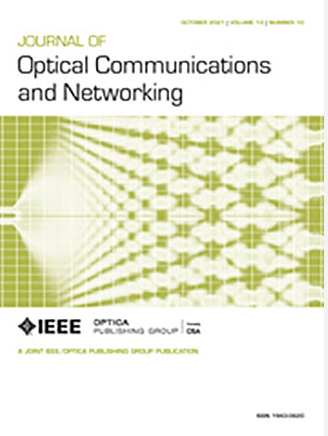超越5G网络中融合光X-haul的成本最优网络规划
IF 4.3
2区 计算机科学
Q1 COMPUTER SCIENCE, HARDWARE & ARCHITECTURE
引用次数: 0
摘要
无线通信技术的快速发展推动了超5G (B5G)网络的发展,旨在为自主系统和沉浸式体验等应用提供超低延迟、高容量连接和可扩展部署。有效地设计无线接入网(RAN)及其传输基础设施是一个关键的挑战。向开放式RAN (O-RAN)体系结构的转变,包括分解的集中式单元(cu)、分布式单元(du)和无线单元(ru),提供了一个很有前途的解决方案。然而,这些组件的最佳布局和传输网络设计仍然是一个挑战,特别是在多样化和成本敏感的环境中。本文提出了B5G网络设计的综合优化框架,利用混合整数线性规划(MILP)共同优化O-RAN组件和光传输网络的布局。通过集成地理信息系统(GIS)数据,该框架考虑了现实世界的约束条件,包括地形、基础设施、用户分布、覆盖要求和容量要求,从而实现了实用且具有成本效益的设计。提出的优化框架允许探索不同配置下的最优规划方案,有助于分析不同网络部署方法的可扩展性和效率。评估结果证明了该框架在不同部署场景下降低成本的有效性和多功能性,同时满足性能和覆盖要求,为网络运营商和规划者提供了有价值的见解。本文章由计算机程序翻译,如有差异,请以英文原文为准。
Cost-optimal network planning for converged optical X-haul in Beyond 5G networks
The rapid evolution of wireless communication technologies has led to the development of Beyond 5G (B5G) networks, aiming to deliver ultra-low latency, high-capacity connectivity, and scalable deployments for applications including autonomous systems and immersive experiences. A critical challenge lies in efficiently designing the radio access network (RAN) and its transport infrastructure. The shift to open RAN (O-RAN) architectures, with disaggregated centralized units (CUs), distributed units (DUs), and radio units (RUs), offers a promising solution. However, optimal placement of these components and transport network design remains a challenge, especially in diverse and cost-sensitive environments. This paper proposes a comprehensive optimization framework for B5G network design, jointly optimizing the placement of O-RAN components and optical transport networks using Mixed Integer Linear Programming (MILP). By integrating geographic information system (GIS) data, the framework considers real-world constraints, including terrain, infrastructure, user distribution, coverage requirements, and capacity requirements, enabling practical and cost-effective designs. The proposed optimization framework allows exploration of the optimal planning solutions under diverse configurations, which helps analyze different network deployment approaches for their scalability and efficiency. The evaluation results demonstrate the effectiveness and versatility of the framework in reducing costs under diverse deployment scenarios while meeting performance and coverage requirements, offering valuable insights for network operators and planners.
求助全文
通过发布文献求助,成功后即可免费获取论文全文。
去求助
来源期刊
CiteScore
9.40
自引率
16.00%
发文量
104
审稿时长
4 months
期刊介绍:
The scope of the Journal includes advances in the state-of-the-art of optical networking science, technology, and engineering. Both theoretical contributions (including new techniques, concepts, analyses, and economic studies) and practical contributions (including optical networking experiments, prototypes, and new applications) are encouraged. Subareas of interest include the architecture and design of optical networks, optical network survivability and security, software-defined optical networking, elastic optical networks, data and control plane advances, network management related innovation, and optical access networks. Enabling technologies and their applications are suitable topics only if the results are shown to directly impact optical networking beyond simple point-to-point networks.

 求助内容:
求助内容: 应助结果提醒方式:
应助结果提醒方式:


